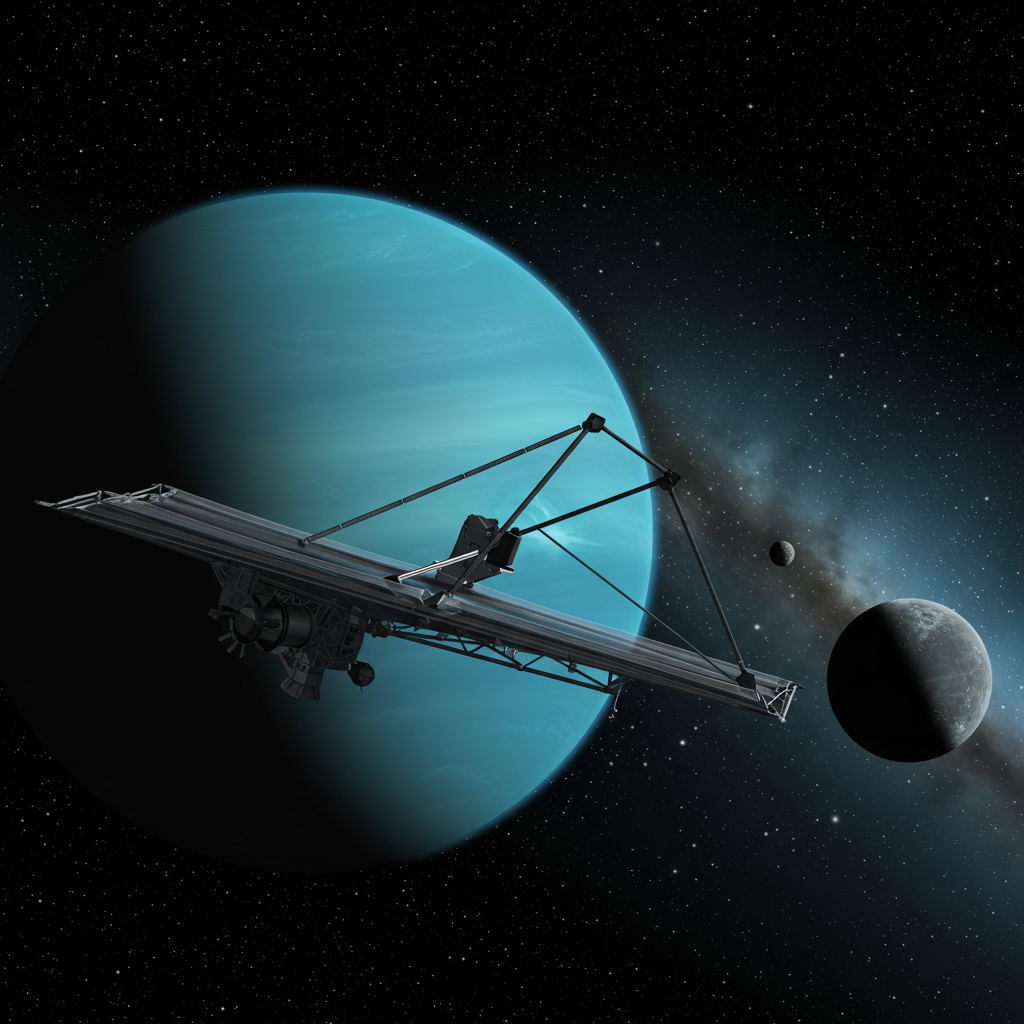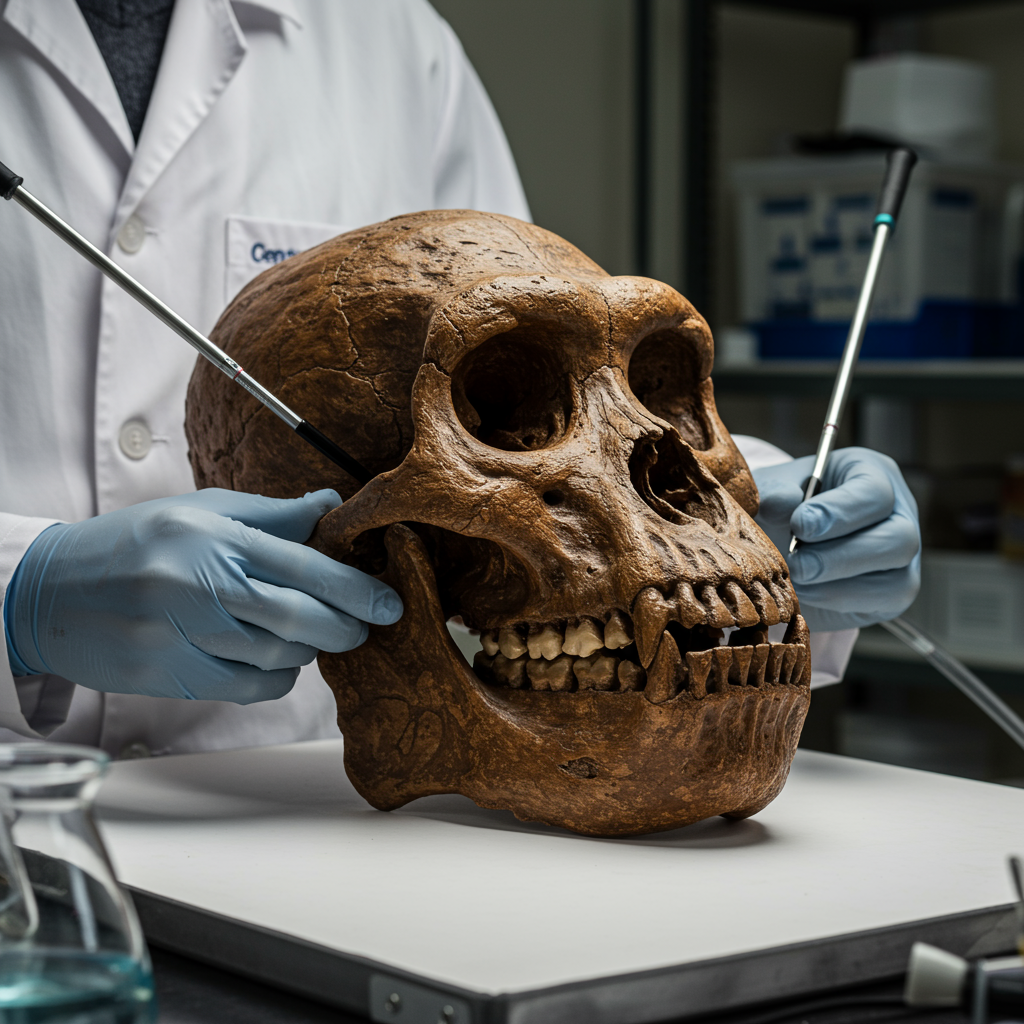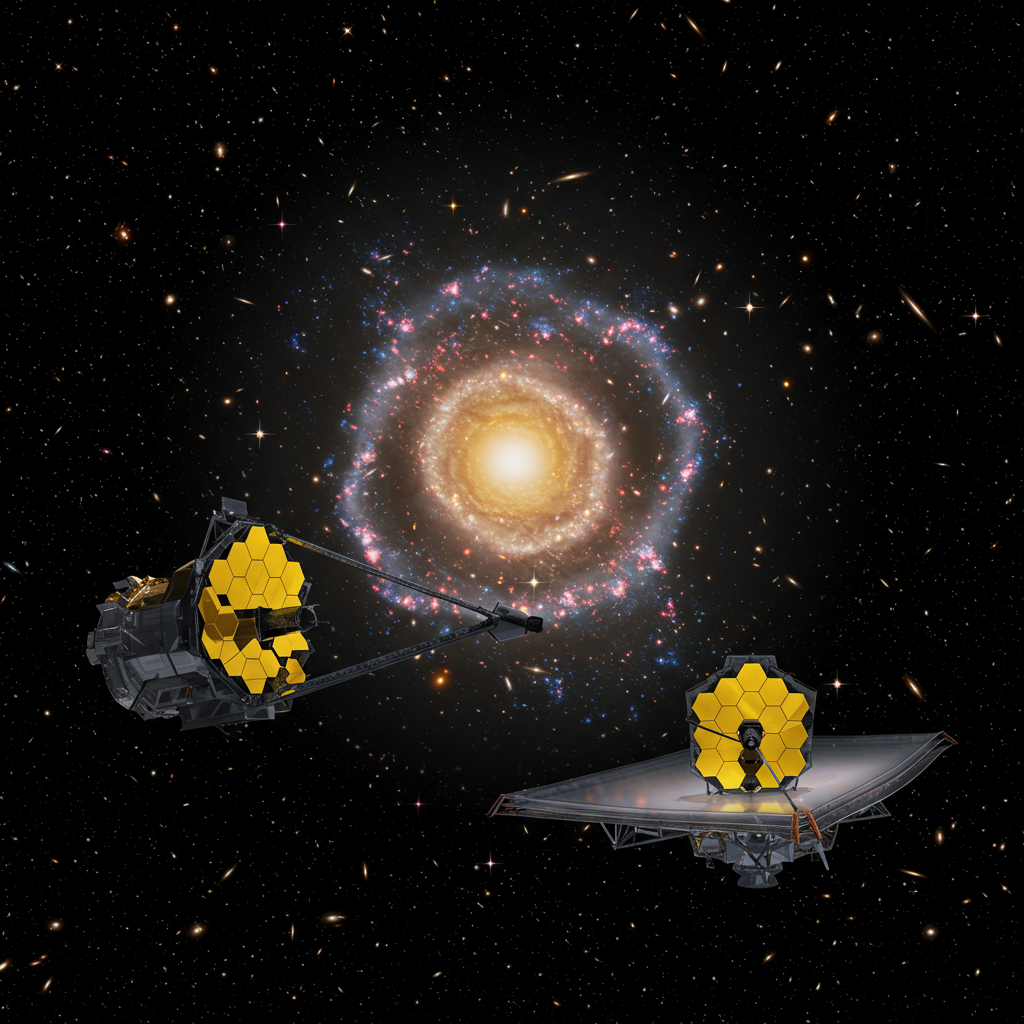A groundbreaking discovery has rocked the world of planetary science: astronomers, leveraging the unparalleled capabilities of the James Webb Space Telescope (JWST), have detected what appears to be a previously unknown moon orbiting the distant ice giant, Uranus. This potential addition, provisionally named S/2025 U1, could bring the total count of Uranus’s known satellites to an astounding 29. The finding represents a significant leap in our understanding of the outer solar system and highlights the intricate dynamics within Uranus’s unique celestial neighborhood.
This thrilling revelation, currently undergoing peer review for final confirmation, was made possible by the meticulous work of a research team led by Maryame El Moutamid of the Southwest Research Institute (SwRI). Their observations in early 2025, specifically on February 2nd, utilized the JWST’s Near-Infrared Camera (NIRCam) to capture a series of long-exposure images of Uranus. These highly sensitive infrared captures provided the crucial data needed to spot this exceptionally faint and diminutive celestial body that had eluded previous missions.
Unveiling a Hidden Satellite: S/2025 U1’s Distinct Features
The newly detected Uranus moon, S/2025 U1, is remarkably small, estimated to be a mere six miles (about 10 kilometers) in diameter. To put this into perspective, it’s less than a third the width of New York City. Its tiny size and exceptionally low solar reflectivity, or albedo, are primary reasons it remained undetected for so long. Even NASA’s Voyager 2 space probe, which performed the only close flyby of Uranus nearly four decades ago in January 1986, was unable to spot it.
S/2025 U1 maintains a close, nearly circular orbit around Uranus, situated approximately 35,000 miles (56,000 kilometers) from the planet’s center. It circles within Uranus’s equatorial plane, nestled between the orbits of the moons Ophelia and Bianca, just beyond the planet’s main ring system. This specific orbital path suggests that it likely formed near its current location, offering clues about the early history of the Uranian system.
The James Webb Space Telescope: A New Eye on the Outer Solar System
The discovery of S/2025 U1 is a testament to the cutting-edge capabilities of the James Webb Space Telescope. Detecting such a small, dim object next to the very bright planet Uranus is a monumental challenge. As Mark Showalter of the SETI Institute, a member of the research team, aptly described, it’s akin to “staring into the headlight of a car and trying to look at a fly.” The JWST’s NIRCam instrument, with its high resolution and extraordinary infrared sensitivity, was uniquely equipped for this task.
This advanced observational power allows astronomers to push the boundaries of space exploration. Webb’s ability to pierce through the cosmos and reveal previously unseen details is fundamentally changing our understanding of distant planetary systems. This specific observation stemmed from an application to study Uranus’s rings, inadvertently leading to the detection of this new Uranus moon. Such serendipitous discoveries underscore the telescope’s transformative impact on astronomical research.
Uranus’s Chaotic History and Its Unique Moon System
Uranus stands out among the solar system’s planets for its remarkably complex and densely populated inner moon system. Matthew Tiscareno, also a researcher at the SETI Institute and a member of the discovery team, emphasizes that “no other planet has as many small inner moons as Uranus.” The intricate inter-relationships between these small satellites and the planet’s rings hint at a “chaotic history” that blurs the distinction between a ring system and a system of moons.
The current count includes 14 inner moons, five major moons (Miranda, Ariel, Umbriel, Titania, and Oberon), and ten irregular moons. The addition of S/2025 U1, being smaller and much fainter than even the previously known smallest inner moons, strongly suggests that the Uranian system harbors even greater complexities and potentially more undiscovered satellites. Scientists like Showalter and El Moutamid are confident that further moons await discovery, possibly acting as “shepherding moons” that influence the structure of the planet’s dark rings.
The precise, nearly circular orbit of S/2025 U1 is a key piece of information. Unlike some of Uranus’s irregular moons, which have distant, highly elliptical, and inclined orbits, inner moons like S/2025 U1 tend to be regular. This regularity often indicates that they formed from the same flattened disk of material that created the planet itself or its larger, inner satellites. This aspect supports the hypothesis that the moon formed in place, close to its current orbital position.
What’s Next for Uranus and Its Growing Family of Moons?
The provisional designation S/2025 U1 follows a standard naming convention for newly discovered satellites. Once confirmed by peer review, the moon will be submitted to the International Astronomical Union (IAU) for official naming. Historically, Uranus’s moons are named after characters from the works of William Shakespeare or Alexander Pope. This tradition, dating back to the 1787 discovery of Titania and Oberon, adds a touch of literary flair to celestial nomenclature.
The detection of S/2025 U1 serves as a powerful reminder of how much remains to be learned about our solar system’s outer reaches. While the JWST offers unprecedented observational capabilities, the full extent of Uranus’s secrets may require closer inspection. Scientists anticipate that a proposed Uranus Orbiter and Probe mission, currently planned for the 2040s, could revolutionize our understanding by providing detailed, close-up data. This future mission would undoubtedly lead to a significant surge in discoveries, potentially unveiling countless more tiny moons and unraveling the mysteries of Uranus’s formation and evolution.
The complexity of Uranus’s ring system, composed of dark material unlike the brighter rings of Saturn, also points to the existence of more unseen influences. The “sharpness” of Uranus’s rings, as noted by El Moutamid, strongly implies the presence of additional, as-yet-undetected moons that play a role in shaping and maintaining their structure. These insights are continuously pushing the boundaries of planetary science, fostering a deeper appreciation for the dynamic processes at play in our cosmic neighborhood.
Frequently Asked Questions
What are the key characteristics of Uranus’s potential 29th moon, S/2025 U1?
S/2025 U1 is an exceptionally small celestial body, estimated to be only about six miles (10 kilometers) in diameter. It orbits Uranus approximately 35,000 miles (56,000 km) from the planet’s center, within its equatorial plane, situated between the moons Ophelia and Bianca. Its diminutive size and low reflectivity are why it remained undetected by the Voyager 2 probe in 1986. This nearly circular orbit suggests it may have formed near its current location.
Which advanced telescope was crucial in detecting this new Uranian satellite?
The groundbreaking discovery of S/2025 U1 was made possible by the James Webb Space Telescope (JWST). Specifically, the telescope’s Near-Infrared Camera (NIRCam) was used to capture a series of long-exposure infrared images of Uranus in early 2025. The JWST’s unparalleled resolution and infrared sensitivity allowed researchers to spot this tiny, faint moon, which was previously invisible to other observatories and even the Voyager 2 spacecraft.
How does the discovery of S/2025 U1 change our understanding of Uranus’s complex moon and ring system?
The detection of S/2025 U1 reinforces the idea that Uranus possesses a uniquely complex inner moon system, with more small satellites than any other planet. Researchers suggest that the intricate interactions between these numerous small moons and Uranus’s rings point to a “chaotic history,” blurring the distinction between rings and moons. This discovery implies that even more undiscovered complexities and potentially additional tiny moons exist within Uranus’s orbital environment, deepening our appreciation for its dynamic evolution.
A Glimpse into Planetary Evolution
The potential addition of S/2025 U1 to Uranus’s known satellite count is more than just a number; it’s a window into the dynamic and often violent processes that shape planetary systems. Each new discovery, especially of such small and challenging-to-detect objects, helps refine our models of planetary formation and the ongoing evolution of celestial bodies. The James Webb Space Telescope continues to prove its worth as a premier instrument for unveiling the hidden wonders of our universe, promising many more thrilling insights into the solar system’s enigmatic outer reaches. As scientists continue to pore over the data, the true scope of Uranus’s celestial family may yet surprise us.




